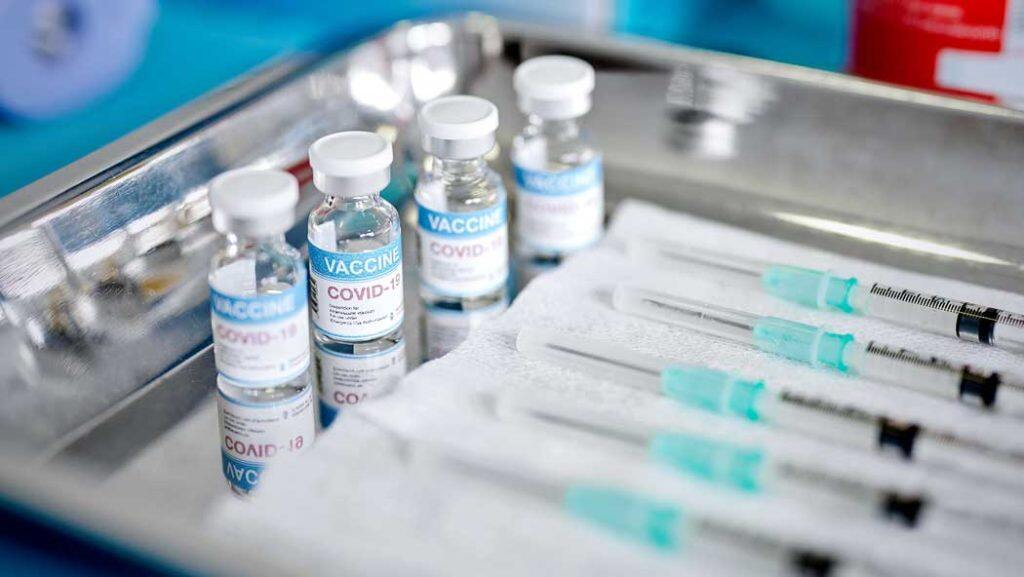University of Alberta researchers will help Canada get ready for the next infectious disease pandemic, thanks to nearly $100 million in new federal research grants to find and make new vaccines, diagnostic tests and treatments against a wide range of threats.


Soraya Martinez Ferrada, minister of tourism and minister responsible for the economic development agency of Canada for the regions of Quebec, on behalf of François-Philippe Champagne, minister of innovation, science and industry, and Mark Holland, minister of health, announced nearly $574 million today for pandemic preparedness projects at five research hubs across the country.
“The projects that we’re supporting today will strengthen our ability to supply medicines, vaccines and therapeutics for the benefit of Canadians,” Martinez Ferrada says. “These collaborations between research hubs, postsecondary institutions and research hospitals will foster innovation across the country. Thanks to the work of experienced scientists in institutions at the cutting edge of innovation, Canada will be ready to respond to future health priorities.”
Four successful projects were put forward by the PRAIRIE Hub for Pandemic Preparedness, which is led by the University of Alberta and includes researchers from the University of Manitoba, the University of Saskatchewan and the University of Calgary, along with biomanufacturing industry partners.
Joanne Lemieux, professor of biochemistry and executive scientific director of the PRAIRIE Hub, led the efforts to bring together teams of academic and industry leaders from across the Prairies to find ways to counter emerging health threats and accelerate biomanufacturing in Canada.
“Seven million people died worldwide from SARS-CoV-2 and it was devastating,” says Lemieux.
“From a public health standpoint for Canada, to have vaccines mobilized and ready to go into people’s arms is an important factor to prevent catastrophic outcomes from an emerging infectious disease.”


Nearly $70 million of the support for PRAIRIE Hub projects will go to buy new equipment and build production facilities to boost Canada’s biomanufacturing capacity.
“Not only will the PRAIRIE Hub be doing state-of-the-art virology research to develop a vaccine, the whole point is to use that technology so we can make the product,” says Michael Houghton, winner of the 2020 Nobel Prize in Physiology or Medicine, professor of medical microbiology and immunology, and director of the Li Ka Shing Applied Virology Institute.
“This significant investment from the Government of Canada is an affirmation of the world-class excellence of U of A researchers and their contributions in the areas of vaccine development and production,” says Aminah Robinson Fayek, U of A vice-president of research and innovation. “As the lead institution in the PRAIRIE Hub, we are pleased to convene expertise from across Western Canada to advance the future of pandemic preparedness.”
From vaccine discovery to manufacturing
The Houghton team will receive $35.3 million over four years to develop, test and manufacture new vaccines against three groups of viruses identified as having high pandemic potential: influenza, orthopoxviruses and arenaviruses. One strain of influenza, H5N1, is also known as avian influenza or bird flu and it has infected wild and farmed birds and mammals around the world for the last few years, recently causing an outbreak in cattle. Orthopoxviruses cause such diseases as smallpox and mpox, and arenaviruses are behind Lassa fever and some types of non-bacterial meningitis.
The Houghton team will use self-amplifying RNA, an emerging technology already used in cancer treatments and other vaccines, which would allow smaller and safer doses than are currently required for COVID-19, for example. It’s an improvement on the mRNA vaccines used against COVID-19, which encode the viral spike protein in mRNA wrapped within a protective lipid coating, which then sparks an immune response inside the body.
“I think for the next pandemic, self-amplifying RNA vaccines will be the preferred way to go because you can use a tenfold lower dose with the same efficacy, which should reduce vaccine hesitancy,” says Houghton, who was knighted in 2021. “That lower dose means fewer side effects, and it also means you can provide enough doses for the world much more easily.”
The goal is not just to discover the best vaccines against each virus, but to test them in animals, prepare for human clinical trials and develop biomanufacturing facilities that could scale up quickly, as soon as a new viral outbreak is detected. The team has several corporate partners including Applied Pharmaceutical Innovation, which leads the Canadian Critical Drug Initiative in Edmonton.
Ready for trials
Another project at the U of A will ensure Canada has the capacity to conduct clinical trials efficiently once new vaccines and treatments are developed. The lack of Canadian facilities that were capable of filling and finishing sterile, injectable vaccines forced developers to look outside the country to get the job done during the COVID-19 pandemic.
Thanks to previous funding from the Government of Alberta and nearly $6 million in new money from today’s federal announcement, U of A’s Alberta Cell Therapy Manufacturing facility, under scientific director and professor of surgery Greg Korbutt and director Gayle Piat, will increase capacity to fill and finish vaccines and other injectable drugs and reduce bottlenecks to ensure new medicines are available for clinical trials when needed.
Accurate, accessible diagnostic tests
Most experts believe it is a question of when, rather than if, a new pandemic will occur, but no one knows the timing or which pathogen — either bacterial or viral — will be responsible. One of the newly-funded projects aims to ensure that, no matter what causes an outbreak, there will be accurate and accessible diagnostic tests ready so people know what’s making them sick.
Chris Le, professor of laboratory medicine and pathology, has been given approximately $12 million to develop a pipeline for both point-of-care diagnostic tests (used in doctor’s offices, smaller hospitals or remote community clinics) and more sophisticated laboratory-based blood tests.
Le will bring together a cross-disciplinary team that includes pathologists, microbiologists, analytical chemists, molecular biologists and clinicians from all four of the PRAIRIE Hub universities.
The diagnostic pipeline will be a proven system or series of steps to design, create, evaluate and build prototypes for better diagnostic tests to identify existing pathogens and immune responses. But it will also be ready to pivot as soon as a new pathogen is identified.
“One of the points is to make the pipeline adaptable and quickly switchable,” says biochemist Andrei Drabovich. “These tests will have improved accuracy and capacity in terms of the number of samples, but also the depths of pathogen nucleic acids and proteins that we can measure, so we can identify newly mutated strains more efficiently, and even provide prognostic information, such as disease severity, waning of immune response and whether a patient should be revaccinated.”
The team is using new tools that weren’t available when COVID-19 started to spread, including sequencing to better characterize nucleic acids and proteins within pathogens, mass spectrometry and proteomics to identity human proteins and antibodies more accurately, and CRISPR gene editing tools to engineer more specific, accurate and simple point-of-care diagnostic tests. The team aims to develop a point-of-care test to give results within 20 minutes, without the need for specialized equipment, so that treatment can begin right away.
Targeted technology
The final PRAIRIE Hub project to be funded will test other methods of vaccine delivery — whether traditional or more modern — to determine which ones produce the best immunity with the fewest side-effects against each class of disease.
The team is led by University of Manitoba microbiologist Peter Pelka, along with co-director Maya Shmulevitz, U of A professor of medical microbiology and immunology and Canada Research Chair in Molecular Virology and Oncology.
There are various types of vaccine platforms, but they all aim to train the immune system to mount an immune response to the target pathogen, preventing or minimizing later infection.The team will use nearly $57 million from the federal government to compare the efficacy of various viral vector vaccine platforms, including:
- Live attenuated virus, where a very small dose of a weakened virus is given to cause an immune response.. The measles vaccine is an example.
- Viral vector, which involves manipulating an existing, relatively harmless virus by adding a protein from a harmful one. The manipulated vector elicits a protective immune response against the harmful virus. An example of this is the addition of the SARS-CoV-2 spike protein to a harmless adenovirus in some types of COVID-19 vaccinations.
- Whole inactivated virus, where the whole virus is produced in eggs, then inactivated. An example of this is the yearly flu vaccine.
- Recombinant protein, in which a protein of the target virus is made in a lab, then mixed with other medicine to enhance the immune response. This is how hepatitis B vaccines are delivered, for example.
The team is developing innovative ways to measure the immune response following vaccination with each method, with a focus on finding ways to target the response within the body, say in the lungs, perhaps by giving vaccine as a spray in the nose or an inhaler by mouth instead of by intramuscular injection.
There are several goals behind testing the vaccine platforms. One is to improve existing vaccines to make them more effective for immunocompromised people who may be at greater risk of severe disease. Another is to uncover vaccines with broad effects against different strains of the same virus. It could mean a more effective shot that you only need once every five or 10 years instead of less effective coverage and a shot every flu season.
“We think of the platform like a mode of transportation for delivering a vaccine. The general public may be familiar with mRNA and non-mRNA vaccines, but there are actually many other ways to transport a vaccine. Our research will focus on exploring innovative technology applications with the goal of producing safe and effective vaccines for diverse populations,” says Pelka.
Training the next generation
Many undergraduate, graduate and postdoctoral students at U of A will be given learning opportunities as part of the PRAIRIE Hub project teams, part of preparing a highly-trained Canadian workforce ready to step in when we face the next pandemic.
All of the research teams include multidisciplinary researchers from the Prairie universities and beyond, including more than 20 U of A faculty members, as well as corporate partners from the biomanufacturing industry.
“We have all seen and felt the impact of pandemics and are determined to prepare for a better future,” says Shmulevitz. “It’s wonderful to see Canada leveraging the best and brightest talent of the public and private sectors.”
In today’s announcement, the Canada Biomedical Research Fund awarded approximately $215 million from the Social Sciences and Humanities Research Council, the Canadian Institutes of Health Research, and the Natural Sciences and Engineering Research Council for research and training, while the Biosciences Research Infrastructure Fund provided approximately $360 million from the Canada Foundation for Innovation to support biomanufacturing infrastructure.






































